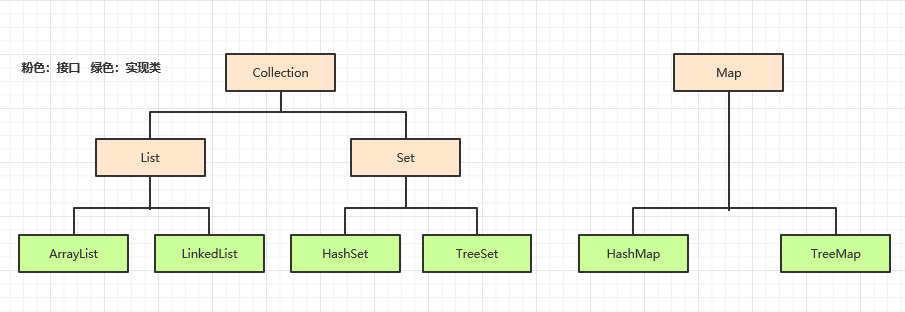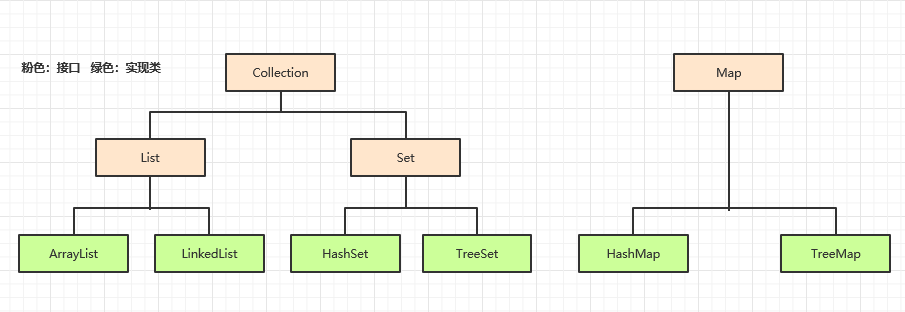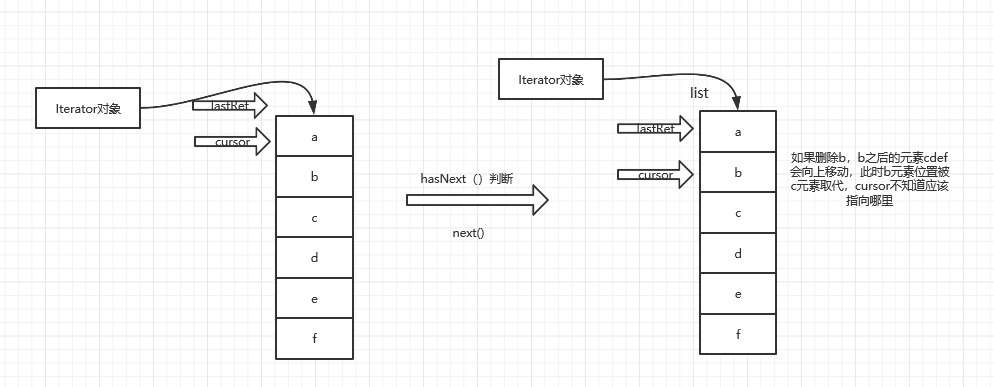1, Concept of container
2, Container API
3, Collection interface
4, Iterator interface
5, Iterable interface
6, Set interface
7, Compatible interface
8, List interface
9, Map interface
-------------------------------------------------------------------------------------------------------------------------------------------------------------------------
1, Concept of container
Why use the collection framework?
If you don't know how many objects your program will need to run, or if you need to store objects in a more complex way -- you can use the java collection framework

2. Collection interface: stores a single value
Features:
1. Different types of data can be stored, while arrays can only store fixed types of data;
2. When the implementation of ArrayList subclass is used, the initialization length is 10. When the length is not enough, the capacity expansion operation will be performed automatically;
api method:
add: the parameter that must be passed in is the Object. Therefore, when writing the basic data type, the process of automatic boxing and automatic unpacking is included;
addAll: the elements of another collection in the field are in this collection;
clear: only the elements in the collection are cleared, but the collection object is not recycled;
remove: delete the specified element;
removeAll: delete the collection element;
Contains: determines whether the set contains the specified element value;
constainsAll: determine whether this set contains another set;
isEmpty: judge whether the set is empty;
Retain all: returns true if there are all elements of another collection in the collection, otherwise false;
Size: returns the size of the current set;
toArray: converts a collection to an array;
3, List and Set interfaces:
List features: orderly, not unique (repeatable)

What's the difference between ArrayList and LinkedList?
ArrayList is an array with variable length, which allocates continuous space in memory;
Advantages: high efficiency of traversal and random access elements;
Disadvantages: the efficiency of adding and deleting a large number of mobile elements is low, and the efficiency of querying by content is low;
LinkedList is a linked list storage method;
Advantages: high efficiency of adding and deleting;
Disadvantages: low efficiency of traversal and random access elements;
Vector: (often asked in interview)
1. Vector is also a subclass implementation of List interface;
2. Like ArrayList, the bottom layer of Vector is implemented by array;
3. Interview often asks the difference:
(1) ArrayList is thread unsafe and efficient, while Vector is thread safe and inefficient;
(2) when the ArrayList is expanded, it is 1.5 times of the capacity, and when the Vector is expanded, it is 2 times of the capacity;
Iterator: (need detailed supplement + source code analysis + Figure)
Circulation mode:
do...while
while
for
There is also a way to enhance the for loop, which can simplify the writing of the loop
CollectionDemo 1 package com.test.CollectionTest; 2 3 import java.util.*; 4 5 public class CollectionDemo { 6 public static void main(String[] args) { 7 Collection collection = new ArrayList(); 8 ((ArrayList) collection).add("abc"); 9 ((ArrayList) collection).add(123); 10 ((ArrayList) collection).add(true); 11 12 for(int i=0;i<collection.size();i++){ 13 System.out.println(((ArrayList) collection).get(i)); 14 } 15 System.out.println("--------------------------------"); 16 Iterator iterator = collection.iterator(); 17 while(iterator.hasNext()){ 18 System.out.println(iterator.next()); 19 } 20 System.out.println("--------------------------------"); 21 for(Object i : collection){ 22 System.out.println(i); 23 } 24 25 } 26 27 }
1 package com.test.CollectionTest; 2 3 import java.util.*; 4 5 public class CollectionDemo { 6 public static void main(String[] args) { 7 Collection collection = new ArrayList(); 8 ((ArrayList) collection).add("abc"); 9 ((ArrayList) collection).add(123); 10 ((ArrayList) collection).add(true); 11 12 for(int i=0;i<collection.size();i++){ 13 System.out.println(((ArrayList) collection).get(i)); 14 } 15 System.out.println("--------------------------------"); 16 Iterator iterator = collection.iterator(); 17 while(iterator.hasNext()){ 18 System.out.println(iterator.next()); 19 } 20 System.out.println("--------------------------------"); 21 for(Object i : collection){ 22 System.out.println(i); 23 } 24 25 } 26 27 }

